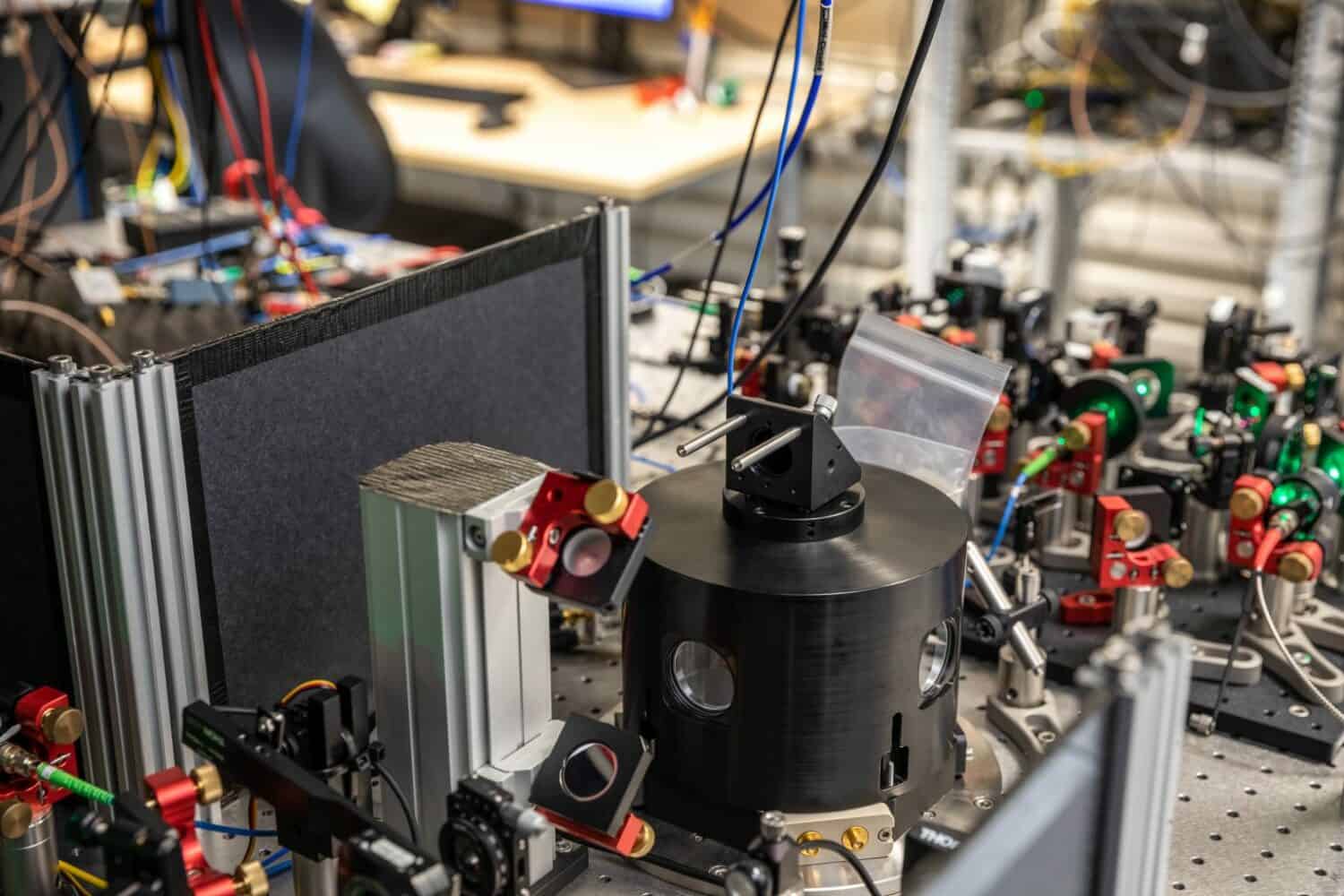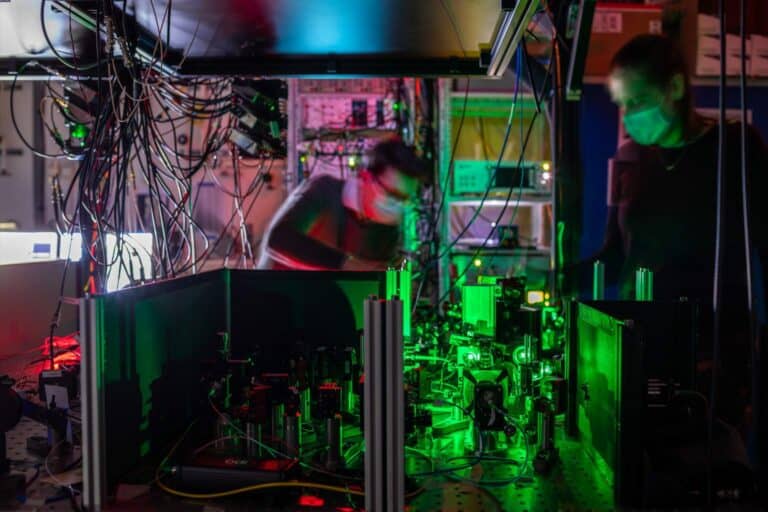Researchers from QuTech have succeeded in ‘teleporting’ quantum bits between three network nodes. The researchers recently published their breakthrough in Nature, a scientific journal.
QuTech is a research division of TU Delft, a renowned technical university in the Netherlands. The newly published method made it possible to send quantum bits over a network of three nodes. The researchers had previously succeeded in sending quantum bits over two nodes. These nodes consist of small quantum processors.
Sending quantum bits is essential for the development of quantum Internet. Quantum Internet is highly suitable for numerous high-quality applications, such as secure data sharing, connecting multiple quantum computers for more computing power and using extremely sensitive quantum sensors.
Teleport
Quantum bits can be sent in different ways. One example is light particles. The disadvantage is that light particles are inevitably lost in the glass fibres during transport, meaning some fail to arrive and disturbance occurs. Another way is to ‘teleport’ the quantum bits. The quantum bit disappears on the sender’s end and subsequently reappears on the receiver’s end. The quantum bit does not travel in the intervening space and therefore cannot get lost, as is the case with light particles. This makes the method highly suitable for quantum Internet.
The teleportation of quantum bits requires a number of important conditions. First, there must be a ‘quantum entangled connection’ between sender and receiver. Second, there must be a reliable method for reading out quantum processors. Third, there must be the capacity to temporarily store quantum bits.

Three steps
In their experiment, the QuTech researchers carried out a three-step plan. In the first step, the ‘teleporter’ has to be prepared by an ‘entangled’ relationship between node A and node C. Both have no direct physical connection, but are connected to node B in the middle. Node A and node B create an entangled relationship between their quantum processors. This entangled relationship is temporarily stored by node B. Next, node B establishes an entanglement relation with node C. This relation is transmitted by node B to node A. This way, all three nodes are now ‘connected’ and suitable for the teleportation of quantum bits.
In step two, the quantum bit is prepared by node C. In the third step, the teleportation process takes place from node C to node A. Node C performs a measurement action on its part of the connection to encrypt the quantum bit. Subsequently, the quantum bit disappears on node C and appears on node A. Here, the quantum bit is decrypted, after which the information is available for further use.
Research into reverse procedure
The QuTech researchers indicate that they will be fine-tuning the technique in the near future. In doing so, they will mainly focus on reversing the first two steps in the process. The quantum bit is created first, the teleport comes second. According to the researchers, this reversed process makes it possible to send quantum bits on demand. This provides more possibilities for setting up a stable quantum network for quantum Internet.
Tip: Dutch researchers claim breakthrough in quantum computing
